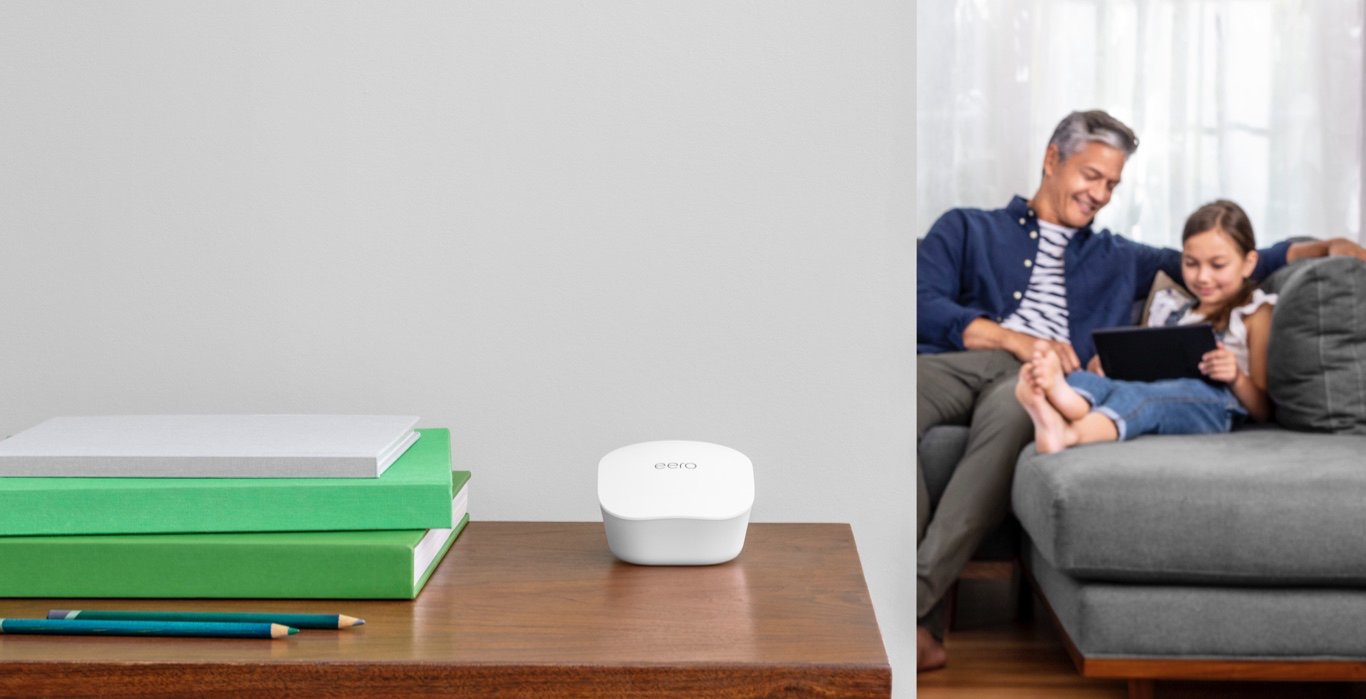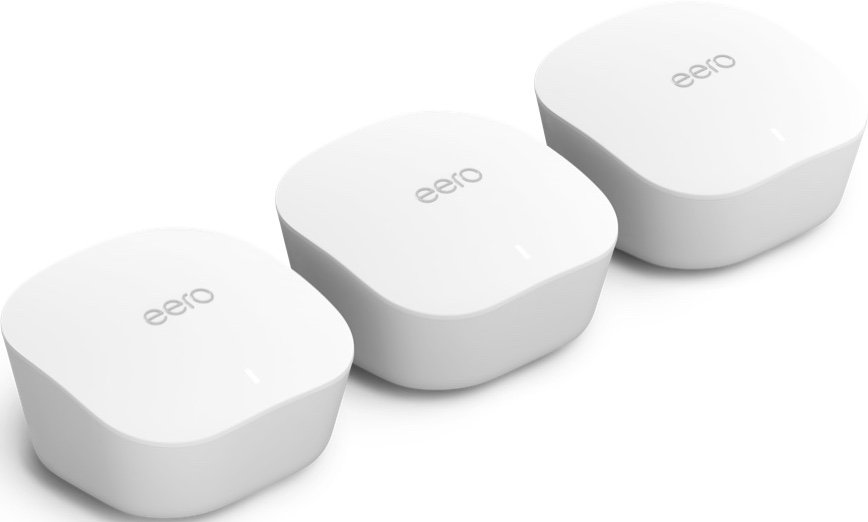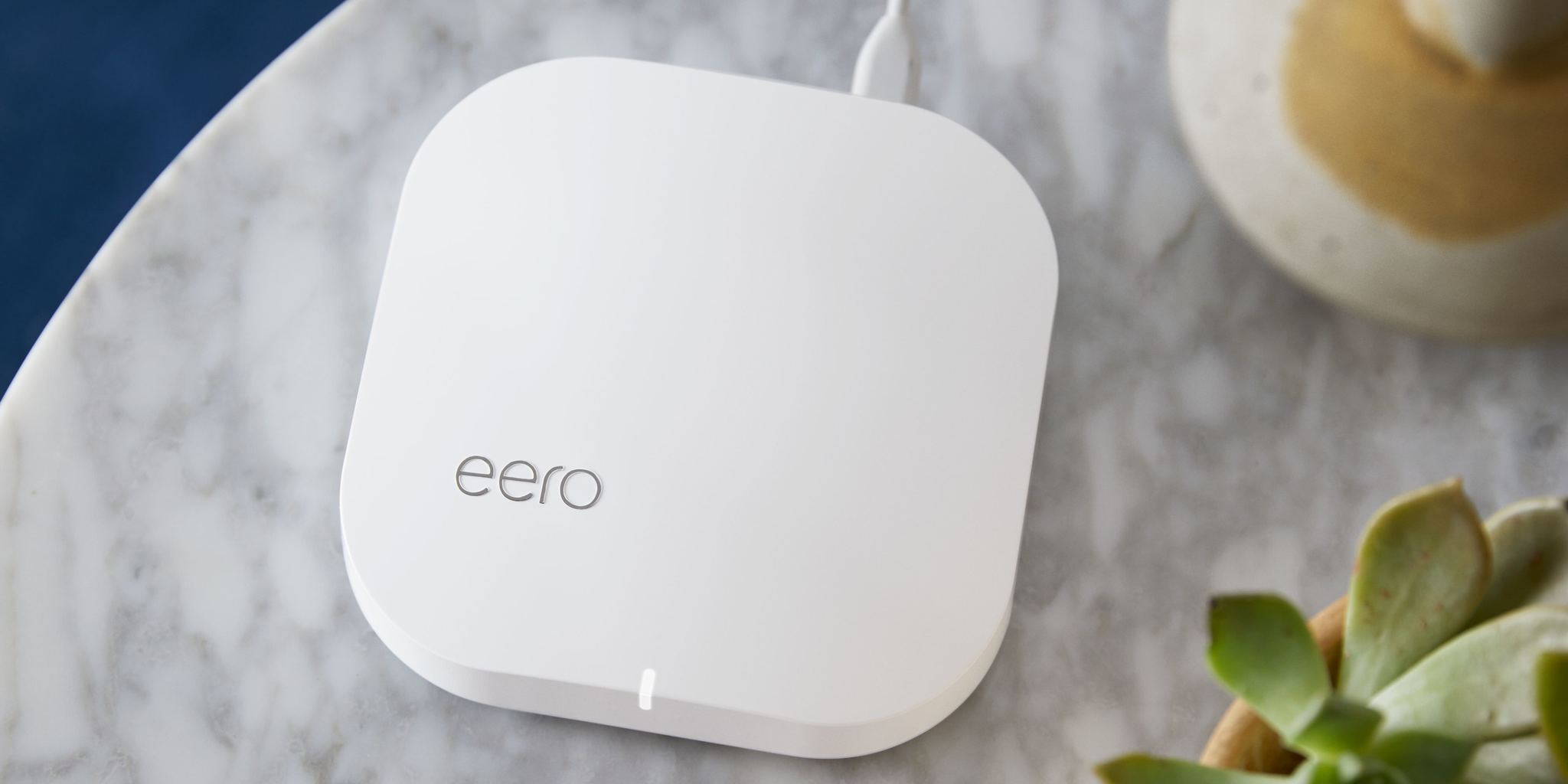Eero vs Eero Pro: Which should you buy?


Affordable coverage
The entry-level Eero system offers pretty much everything that most users will need. This low cost package is easy to set up with the Eero app, covers up to 5,000 square feet, and can be expanded with additional beacons or pro devices. The only downside? It relies on dual-band technology that prevents it from reaching higher speeds.
Pros
- Lower price
- Covers up to 5,000 square feet
- Quick and easy installation
- Supports HomeKit and Alexa
- Expandable
Cons
- Dual-band
- Only two Ethernet ports per node
- Some security features require subscription

Pro speeds
eero's Pro system adds an additional radio, allowing each node to communicate over its own dedicated channel. This allows for greater coverage and faster speeds, perfect for households with a lot of internet activity. However, this also makes the Eero Pro more expensive.
Pros
- Tri-band
- Covers up to 6,000 square feet
- Quick and easy installation
- Supports HomeKit and Alexa
- Expandable based on needs
Cons
- Expensive
- Only two ethernet ports per node
- Some security features require subscription
Mesh networking is a great way to cover your home in fast, reliable Wi-Fi, and Eero is synonymous with this technology. Eero provides plenty of options to fulfill most needs through standard and pro models, plus they are all interchangeable and work with plug-in beacons for increased range. If you need just the basics, then go with the standard Eero system, which is not only cheaper, but it also supports all of the same app features and security as the Pro. If you have a ultra high speed internet connection and can afford to spurge, then go with the Pro.
Standard vs. pro

Despite its "pro" moniker, the more expensive system is almost identical to the standard Eero system. Each package includes three Eero nodes that are placed at various points around your home, with both sporting two Ethernet ports around the back. This allows them to cover every corner of your home, and provides hardwired options in more places. Setup for both models follows the same process via the Eero app, and they can both be up and running in a matter of minutes.
Unless you absolutely need the additional tri-band radio, then we suggest going for the entry-level system.
All Eero models function the same in the Eero app as well. You'll see all of your devices in a clean, easy to understand interface, complete with customizable names and icons that represent the type of gear connected. Guest access, device blocking, and automatic updates are all standard, however more advanced features like ad blocking and filtering require an Eero Secure subscription. Eero Secure enables family profiles where you can lock down access based on time of day, and pause all of a household members' devices with just a tap. A subscription also gives you access to ad blocking, safe filters, threat scanning and even free apps, depending on which level of service you subscribe to. And yes, it works on both devices,
There are some key differences to keep in mind though, price and the number of radios inside. The base Eero system is $250 less than the Pro, which is a serious chunk of change for just one major difference: an extra radio. However, this extra radio can be helpful for owners of larger homes or those who need truly high speed internet connections. If you go for a standard eero, you might be saving a little extra money, but you would be keeping your internet speeds from their full potential.
| Header Cell - Column 0 | Eero WiFi System | Eero Pro WiFi System |
|---|---|---|
| App management | iOS & Android | iOS & Android |
| Wi-Fi | 802.11a/b/g/n/ac | 802.11a/b/g/n/ac |
| Radios | Dual-band | Tri-band |
| Coverage | Up to 5,000 sq. ft. | Up to 6,000 sq. ft. |
| Wi-Fi Speeds | Up to 550 Mbps | Up to 1 Gbps |
| Ethernet Speeds | Up to 1 Gbps | Up to 1 Gbps |
| Ethernet Ports | 2 per node | 2 per node |
| Works with Apple HomeKit | Yes | Yes |
| Works with Amazon Alexa | Yes | Yes |
| Works with Google Assistant | No | No |
| Expandable | Yes | Yes |
| Processor | 700 MHz Quad-Core | 700 MHz Quad-Core |
| Memory | 512mb Ram | 512mb Ram |
| Storage | 4gb flash | 4gb flash |
| Bluetooth | LE 5.0 | LE 4.2 |
| Family Profiles | Yes w/Eero Secure | Yes w/Eero Secure |
| Internet Pausing | Yes | Yes |
| Ad Blocking | Yes w/Eero Secure | Yes w/Eero Secure |
| VPN | Yes w/Eero Secure | Yes w/Eero secure |
As you can see, both the Eero and the Eero Pro share a pretty similar feature set. The biggest difference is that the less expensive Eero uses two bands for all of it communication and your network traffic. This limits its speeds to 550 Mbps and its coverage to 5,000 square feet. Internal specs for the two models are exactly the same as far as CPU, RAM, and storage go.
Unless you absolutely need the additional tri-band radio, then we suggest going for the entry-level system. Not only are you going to save a whole lot of money upfront, you can always add a tri-band node down the road if you need it. Additional features, such as Apple's HomeKit and Amazon Alexa control are available for both versions, and they both sport the same number of Ethernet ports, so you are really only paying extra for that additional radio.
iMore offers spot-on advice and guidance from our team of experts, with decades of Apple device experience to lean on. Learn more with iMore!
Christopher spends most of his time writing and dreaming about all things HomeKit and the Home app. Whether it is installing smart light switches, testing the latest door locks, or automating his households daily routines, Christopher has done it all.

